When setting up a tent, the right type of peg is crucial for ensuring stability and security. Different terrains require specific types of tent pegs to provide the best hold. Here’s a detailed guide on various types of tent pegs, their pros and cons, and the best environments for each.
1. Standard Pegs
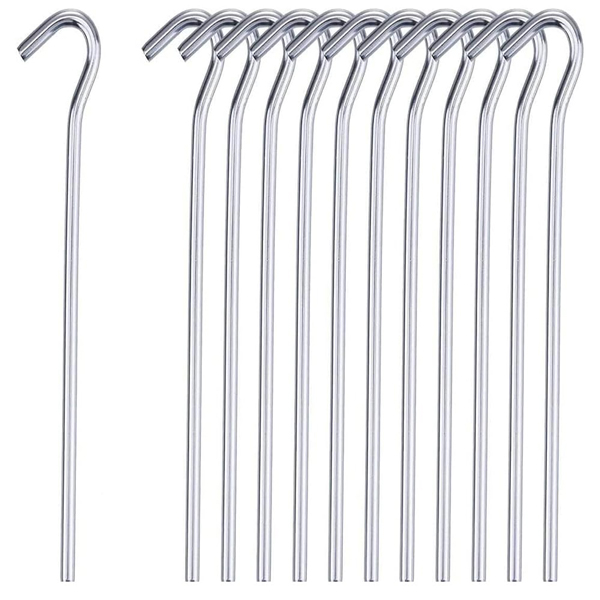
Description: Typically made from steel or aluminum, standard pegs are the most common type provided with tents.
Best For: General use on firm, grassy, or slightly rocky grounds.
Pros:
- Easy to use and widely available.
- Suitable for a variety of terrains.
Cons:
- Can bend easily in rocky or extremely hard ground.
- Limited holding power in loose soil or sand.
2. Sand Pegs
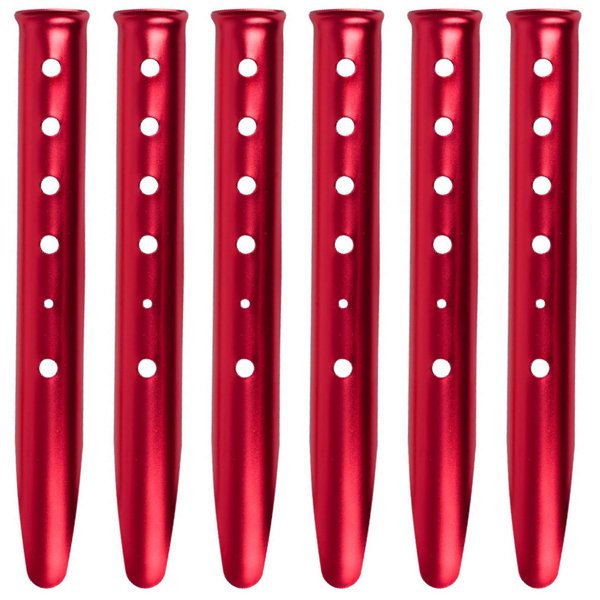
Description: Sand pegs are longer and wider than standard pegs, often made from plastic or aluminum, designed to grip loose, sandy soils.
Best For: Beach areas and loose, sandy soils.
Pros:
- Broad surface area provides better hold in sand.
- Lightweight and easy to transport.
Cons:
- Not suitable for hard or rocky ground.
- Can break if subjected to high stress.
3. Rock Pegs
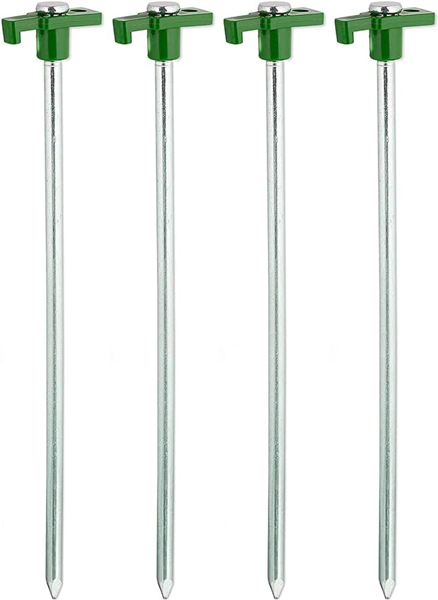
Description: Made from durable materials like steel, rock pegs are thicker and designed to penetrate hard, rocky ground.
Best For: Rocky or hard-packed ground.
Pros:
- Extremely durable and resistant to bending.
- Provides excellent hold in hard ground.
Cons:
- Heavier than other types of pegs.
- Can be difficult to drive into very hard surfaces.
4. Snow Pegs
Description: Snow pegs are typically wider and have a unique design to anchor in snow, often made from lightweight aluminum.
Best For: Snowy environments and soft, powdery snow.
Pros:
- Designed to grip snow effectively.
- Lightweight and easy to carry.
Cons:
- Limited use outside of snowy conditions.
- Can be more expensive than standard pegs.
5. Screw Pegs
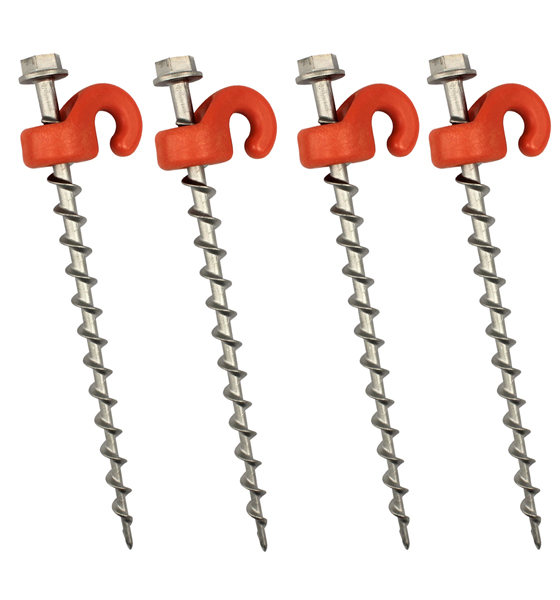
Description: Resembling large screws, these pegs are twisted into the ground, providing strong hold, especially in compacted soils.
Best For: Firm, compacted soil and soft rock.
Pros:
- Excellent holding power.
- Easy to install and remove with a compatible tool.
Cons:
- Requires additional tools for installation.
- Heavier and bulkier than standard pegs.
6. V-Pegs
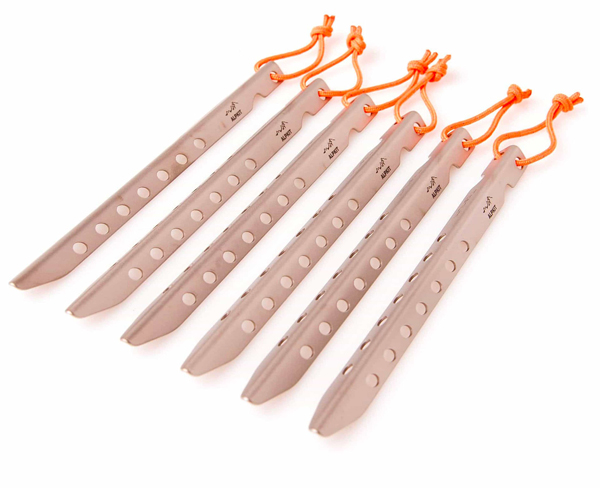
Description: Shaped like a ‘V’, these pegs provide a larger surface area for grip, often made from aluminum or titanium.
Best For: Mixed terrains, including soft and moderately firm ground.
Pros:
- Versatile and can be used in a variety of conditions.
- Lightweight and strong.
Cons:
- Can bend in extremely hard or rocky ground.
- Slightly more expensive than standard pegs.
7. Y-Pegs
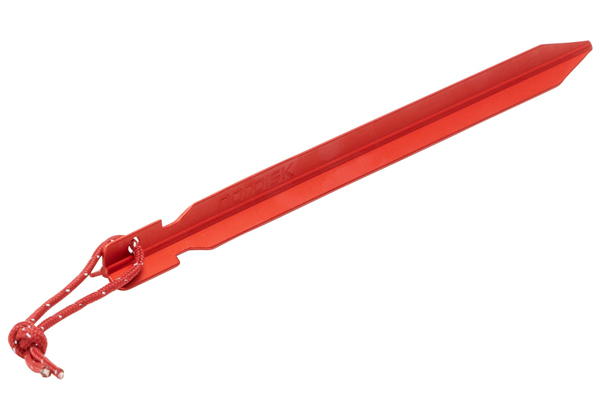
Description: Similar to V-pegs but with a Y-shaped profile, these pegs provide even more stability and holding power.
Best For: Soft to medium ground.
Pros:
- Excellent holding power due to larger surface area.
- Lightweight and durable.
Cons:
- Can be difficult to insert into very hard ground.
- More expensive than standard and V-pegs.
8. Nail Pegs
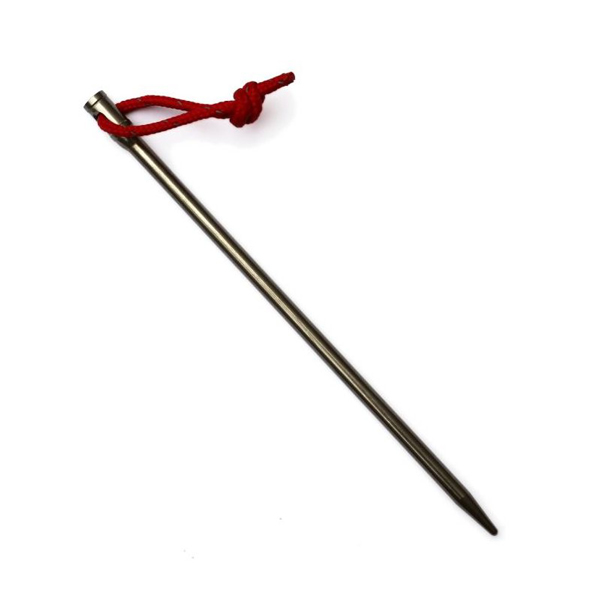
Description: Resembling large nails, these pegs are usually made from steel and have a plastic head for easier insertion and removal.
Best For: Hard or rocky ground.
Pros:
- Very strong and durable.
- Easy to drive into tough ground.
Cons:
- Heavier than other pegs.
- Can be difficult to remove without tools.
9. Plastic Pegs
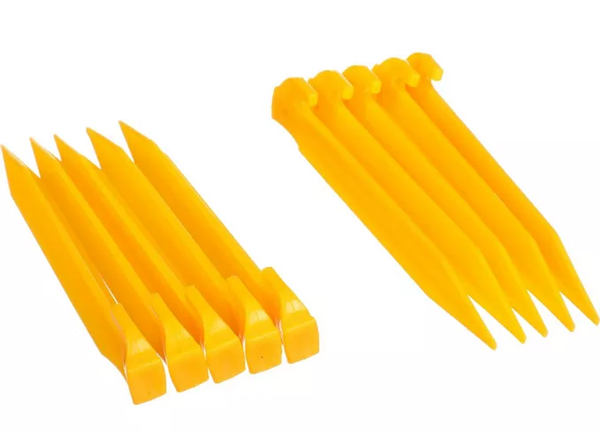
Description: Made entirely from plastic, these pegs are lightweight and suitable for soft grounds.
Best For: Soft ground, such as grass or loose soil.
Pros:
- Lightweight and easy to transport.
- Inexpensive and often included with lightweight tents.
Cons:
- Not very durable and can break easily.
- Limited holding power in hard or rocky ground.
Conclusion
Choosing the right tent peg for your camping trip can make a significant difference in the stability and security of your tent. Here’s a quick recap:
- Standard Pegs: Best for general use on firm or grassy ground.
- Sand Pegs: Ideal for sandy soils and beach areas.
- Rock Pegs: Perfect for rocky or hard-packed ground.
- Snow Pegs: Designed for use in snowy environments.
- Screw Pegs: Excellent for firm, compacted soil with strong holding power.
- V-Pegs: Versatile for mixed terrains.
- Y-Pegs: Provide excellent stability in soft to medium ground.
- Nail Pegs: Strong and durable for hard or rocky ground.
- Plastic Pegs: Lightweight and suitable for soft ground.
Understanding the specific needs of your camping environment will help you select the most appropriate peg, ensuring a safe and enjoyable outdoor experience.

